There’s five things I want to talk about today. Feel free to push play above for audio companion and we’ll just have an old fashioned walk & talk, looking, listening, and sharing stories. Settle in, if you can, or bookmark it. This is another long one!
If you’re new here, this is Sound & Vision: part photo essay, part soundwalk, and part storytelling. This is The Wildwood Trail, Part 3. Find parts 1 and 2 here. Welcome!
I have a new EP out today. It’s another Sleeping Animal instrumental release. This one is called Sol. The cover art features a photo I took on this leg of the hike, and it was composed with light and atmosphere in mind. It’s available on all music streaming platforms today, Friday, May 9th. If you are listening on a PC, consider streaming it and this soundwalk simultaneously. They pair decently well, I think.
An anecdote about black and white photography.
A reflection on distillation and who is this for.
A few words about Macleay Park, the seed that grew into Forest Park, and lastly,
An overview of adjacent Holman Park and its mysterious ditch.
Black and White
Twenty-five years ago I was putting up a show of my paintings in a café and another artist, showing the month before me, was taking her work down, and we got to chatting. I asked her if she had a good show. She said yeah, nothing sold, but some interest.
I chose not to tell her that for my previous show, I sold nearly everything I hung. I was surprised. I thought her photos were great, and I honestly didn’t think my paintings were anything special. I chalked it up to being lucky with my choice to pursue painting.
Here I am now thinking about that, reflecting on my choice to embrace black and white photography for this little project. If I’m being honest, it really doesn’t present well. For starters there’s no punch of emotion. No green, in the season of green we find ourselves in. Moreover, the panoramic form factor is poorly suited to phone viewing, which I’m guessing is probably the majority of Substack traffic? I knew all this going into it. Still, I was curious to try something different.
Distillation
The other day, my friend sent me a link to a music project that involved making passive environmental recordings from a pine tree for a full year: 8760 hours of audio!
The artist’s name is Joshua Bonetta and you can listen to some of the The Pines project at Bandcamp. I did. I found it engrossing; like I was camping in a quiet place, hearing every sonic detail outside a tent.
Collecting the audio (swapping out batteries and SD cards every couple weeks) was just the start for Bonetta. Over the next three years, he meticulously logged, edited and reassembled a soundscape of fantastic realism, distilling the 8760 hours down to 4 hours, for a four album collection. A ratio of 2290 to 1. Insanity.
And here I thought my 20 hours of audio seemed unwieldy and a bit pointless to fuss over, and attempt to share.
I can’t help but compare my little Wildwood Trail project to his. In contrast, my ratio is maybe 2 to 1. I’m editing the work, like he did—I’m removing stuff that I don’t think listeners will find that interesting, like loud anthropogenic sounds, but I think when I’m all wrapped here I expect to come in at about 10 hours or so. Is my ratio off? Who is this for, I ask myself?
I can imagine that for someone incarcerated or someone or unable to get out much, this 10 hours of birds, water, weather and walking sounds would be useful, especially if they had a lot of time on their hands. But, that sounds like a difficult-to-reach demographic, right?
Or I can imagine a desk worker who wants to feel like they're outside, opening a virtual window in their cubicle. It’s useful for that. Or someone who misses a place; the sound of a place. I can imagine this being good for reminiscing. Or someone who just finds the sounds soothing, for whatever reason. I can see that. Maybe I’ll listen to it a few decades from now, when I can’t hike anymore.
Macleay Park
Maclaey Park was the seed that grew into Forest Park.
Macleay Park was formally adopted into Portland’s property inventory in 1897. It was donated, basically on a dare from the city tax man who said if the land can’t be made to earn its property taxes, why not consider just donating to the city as a park? A week later, businessman Donald Macleay did just that. It’s probably important to note here that following the Panic of 1893, property values plummeted and a long depression followed. Conditions were just starting to improve in 1897.
Macleay deeded the 140 acres of Balch Creek gulch to the city as raw land, with the guidance that the city should harvest some timber, splitting the profits between the two nearby hospitals, St. Vincent and Good Samaritan.
He stipulated, “a road wide enough for a horse team should thread through the park and and that patients from the hospitals should have the opportunity to ride along the road and enjoy the rich atmosphere of the outdoors”.
For that first decade the city did little but plant some wildflowers at the entrance to the canyon. According to a 1946 Oregonian article, it was a waiter at a restaurant a few blocks away who took it upon himself to start blazing the first trails in Macleay Park on lunch breaks and days off.
The waiter’s name has been lost in obscurity which is often the fate of the good and wise, but Mr. Keyser declares that the Macleay Park’s present network of trails is the humble waiter’s monument.
And so it goes that Forest Park traces it’s roots back to:
A businessman’s tax-burdened, depression era land donation
A city’s dereliction of donation terms, and initial lack of interest.
A restaurant waiter’s passion project.
When I begin to worry about the possibility of a looming recession on the horizon, I’m reminded of the silver lining that these events often forestall development, and can lead to lasting conservation. If it weren’t for the conditions of the late 1890’s, this lovely old-growth forested canyon would have likely been logged like the rest of the Tualatin Mountains, and privately owned.
Eventually some pretty ornate, rustic bridges were built, along with a very cool staircase cut right out of a downed tree.
Balch Creek once played a role in Portland’s early water supply. Various bits of concrete ruins from that era can be seen from the westernmost bridge crossing.
Holman Park & Pence’s Ditch
The Wildwood Trail climbs out of Balch Creek Canyon, crossing over from the original Macleay Park acreage to the adjacent Holman Park tract, dedicated in 1939. Today it is uniformly just Forest Park. There are few reminders of Holman Park’s distinct origins.
On the February Day I visited, fog settled into the hills, making the rising sun into a light show.
Here the trail traverses above the Willamette Heights neighborhood. Early 1900’s homes back to the forest.
Few old growth survivors can be found on the broad hillsides.
But there are some.
The fog wears off and shadows grow sharper.
Nearing the intersection with the Wild Cherry Trail, the Wildwood Trail is built on an old ditch embankment dating back to 1905.

This ditch is a remnant of an ambitious land development scheme, the full intentions of which we may never know.
In 1905, Lafayette Pence, a former congressman and entrepreneur, began filing for water rights on a great number of creeks within proximity of Portland, while beginning construction on an elaborate ditch above Macleay Park.
According to an April 13th article of that year, Parks Commissioner Col. L. L. Hawkins stopped just short of accusing Pence of a scheme to extort the city of Portland of a future water supply.
“What makes my blood boil,” says the Colonel, “Is to see the manifestations of that man Pence’s colossal nerve. He schemes to take all the water away from that park, tapping Balch’s Creek immediately above the park limits and then goes slashing through the park itself to lay his ditch on public land. (The Oregonian April 15, 1905)”
Just shy of a month later, on May 5th, the embattled Pence gave a luncheon tour to the mayor, the Parks Commission, City Engineer Wanzer, and other officials. The Oregonian reporter declared Pence’s three minute speech delivered in front of his ditch, “a masterpiece,” adding, “It truly looked rather small of the Park Board to block an enterprise so large."
But what was the true aim of this enterprise, other than it being impressive in scope? According to Pence, it was to divert waters from three watersheds (two on the opposite side of the Tualatin Mountain crest to hydraulically grade (i.e. with a water cannon) the hillside above the Willamette Heights neighborhood, sluicing the muddy runoff into Guild’s Lake, ultimately filling it, creating valuable industrial land.
Opinion was split on the matter of whether to allow right-of-way for the flume through Macleay Park, with the Colonel voicing suspicion and opposition.
A week later, Pence’s purported plans were elegantly rendered in full page article in The Oregonian. Were it not for the 1905 Lewis & Clark Exposition opening in a matter of weeks, it might have been the talk of the town. One might wonder if any principals at the Oregonian had a stake in Pence’s scheme?
Fast forward nine months now to February 25th of 1906–the fairgrounds on the shore of Guilds Lake now quiet, and the ditch now funneling water—the conflict boils over for some reason. Mayor Lane and a number of police offers, with sledgehammers in hand, lay to waste 20 ft of flume passing through Macleay Park. “The waters which had been employed in washing down the hill back of Willamette Heights were turned back into the creek,” reported The Oregonian.
Incidentally, I discovered a shelf cut into the slope of Balch Canyon from this 120-year-old water excavation experiment that today allows for the formation of an ephemeral pond. Prior to putting together the pieces of this story—but thinking it was an interesting geologicaI anomaly—I made a soundscape recording here in 2022.
In the aftermath of the flume smashing The Oregonian reported, “Lafe Pence made a survey late yesterday afternoon and a report the part of the flume destroyed lies outside the boundaries of Macleay Park …making the city liable in a big damage suit should Mr. Pence desire to retaliate.”
At a hearing the next day Pence declared, “The only manly thing for you to do is grant me permission to repair the flume.”
“If you do I will have you placed under arrest,” said the Mayor.
Finally, a month later, Lafe Pence’s name appeared for the last time on this matter in the pages of The Oregonian. He was credited in helping to persuade one John S. McMillan of Seattle to purchase the Lewis & Clark exposition grounds and buildings for $500,000. Of McMillan, the article reads, “His plans to the future are retained to a large extent. Yet, in a general way it may be said that he intends bringing manufacturing concerns to Portland.” One may assume the ditch was abandoned.
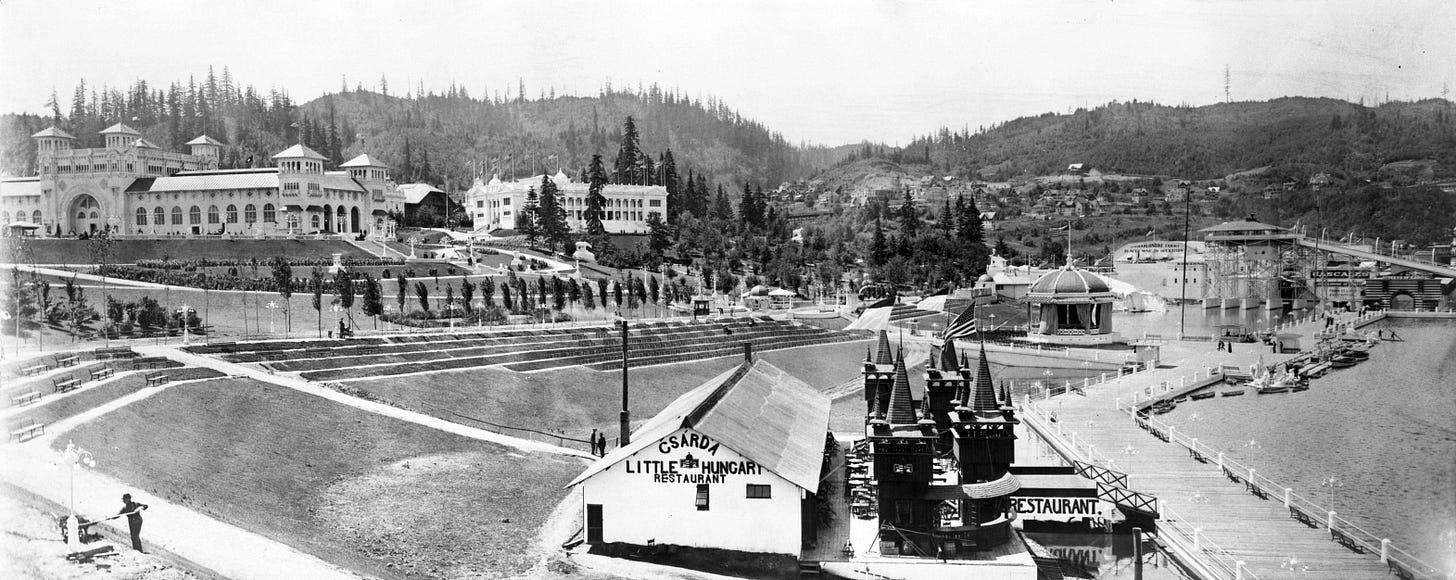
[Pence] left town shortly thereafter. It is reported that his scheme cost the investors $225,000. Unfortunately he had planted a seed that grew and bore fruit alter he left. There were those who liked Pence's idea of filling Guild’s Lake and the profit it would make. …Now when we look down at the industrial area we can see Pence’s scheme instead of a natural body of blue water. (The Oregonian Sept. 27,1970)
The 52-acre Holman Park parcel was donated to the city in 1939, notably in the last years of the Great Depression. (I’m detecting a pattern, here.)
Named for Frederick, Mary and George Holman, the primitive Holman Lane follows the bluff of Balch Creek Canyon down to the Willamette Heights neighborhood where it meets a picturesque meadow, once the showpiece entrance to Holman Park.
Notably, Frederick Holman, a lawyer and avid rose exhibitor, is credited with giving Portland the name “The City of Roses”.
Speaking of names, Last week I mentioned investigating how the Wildwood Trail got its name. I’m still chasing down my leads—don’t touch that dial. Til next week, happy trails to you!

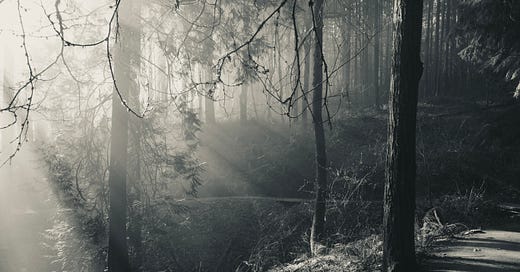


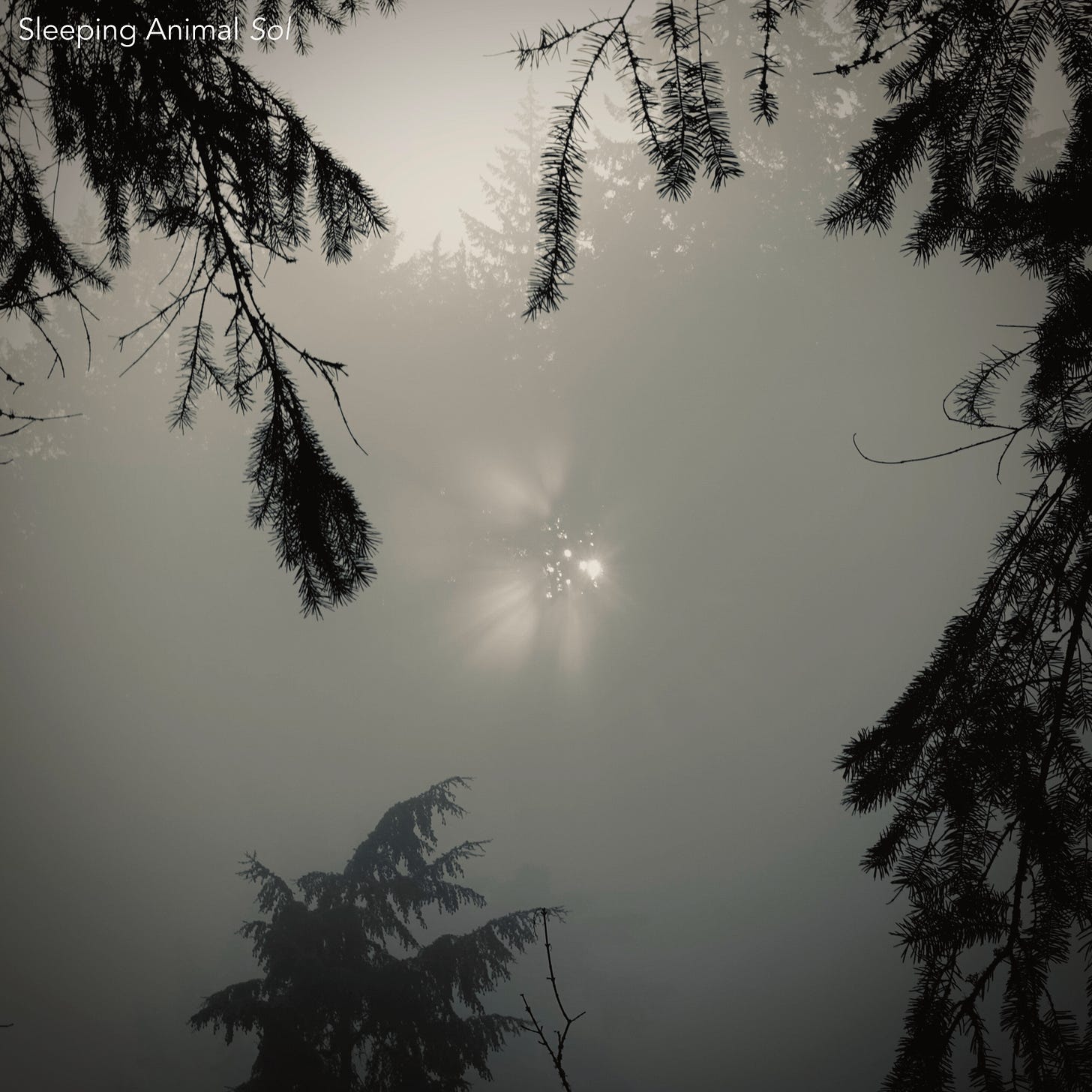




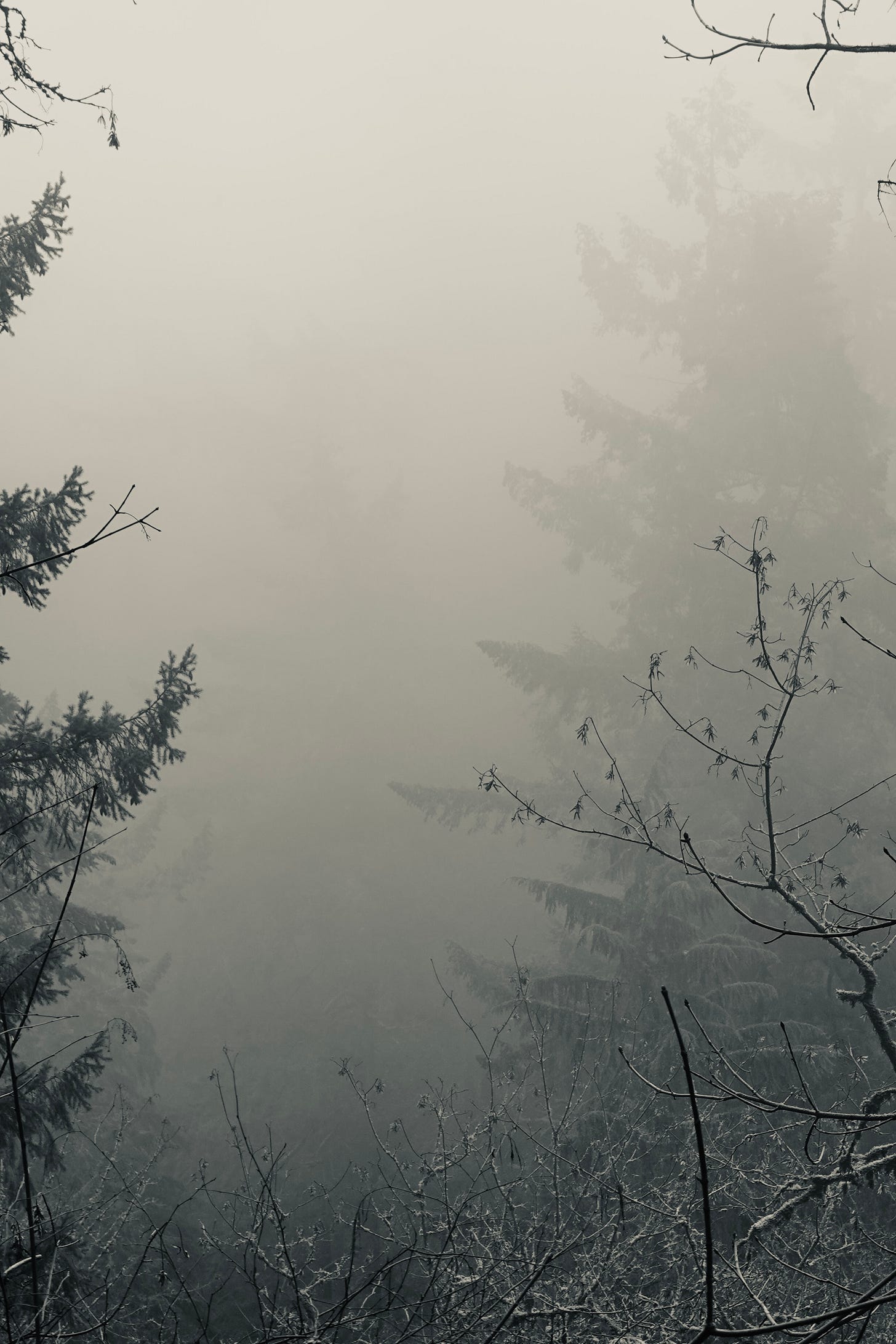
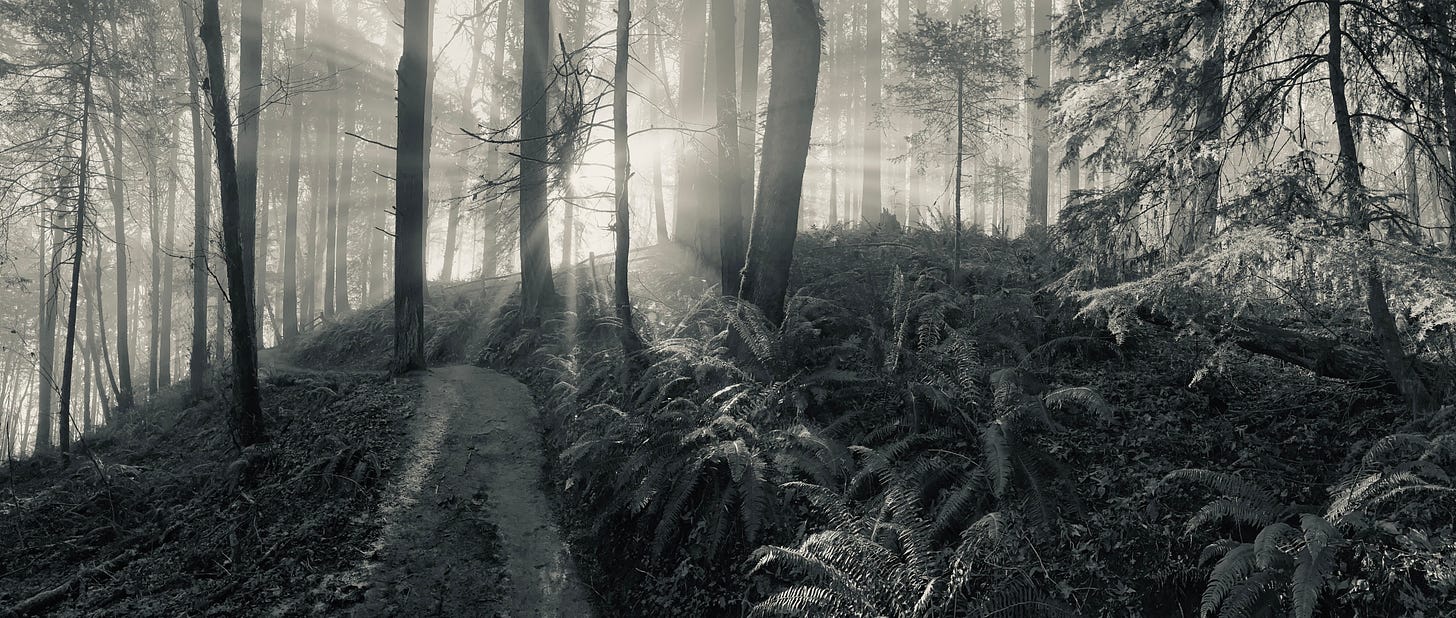
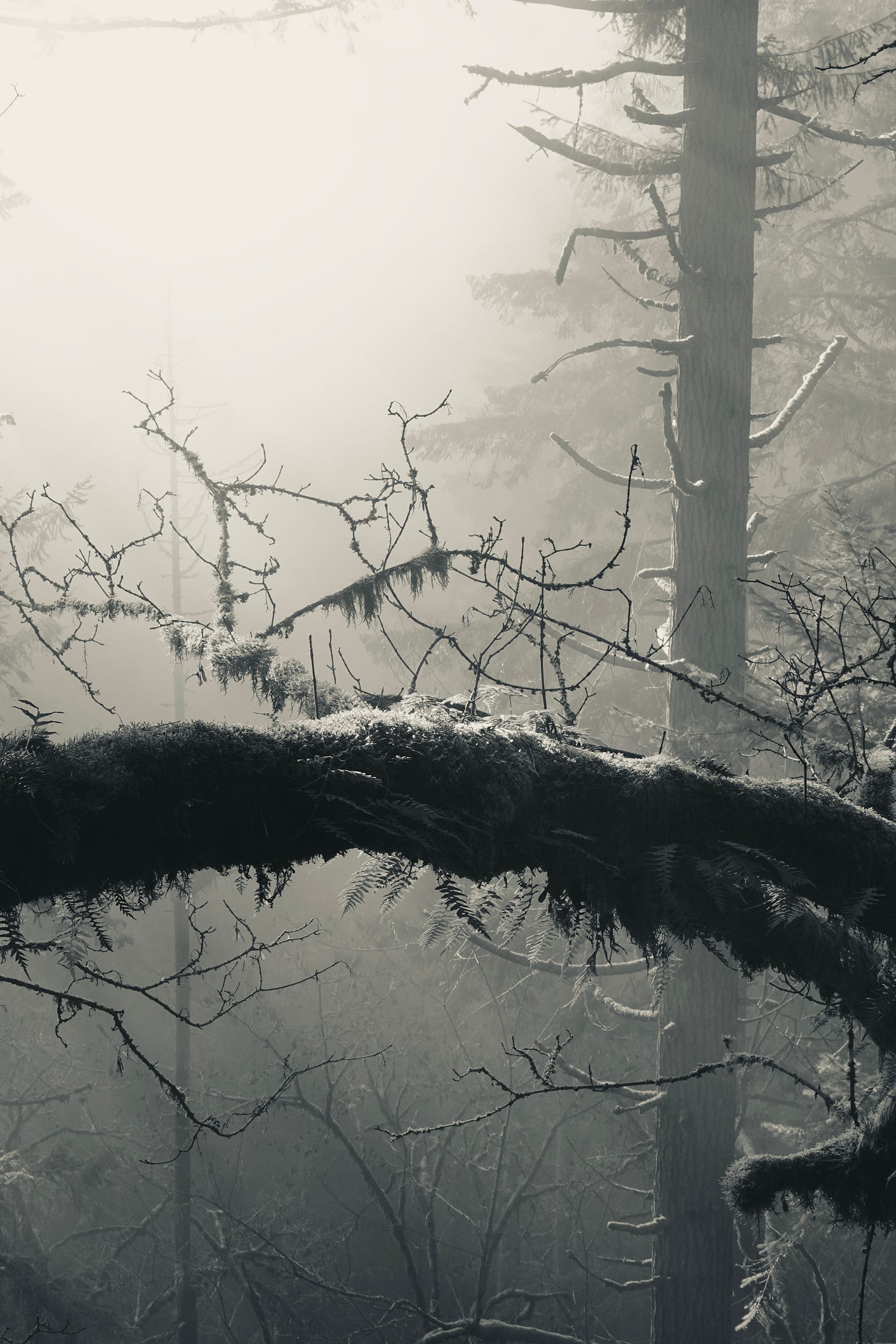
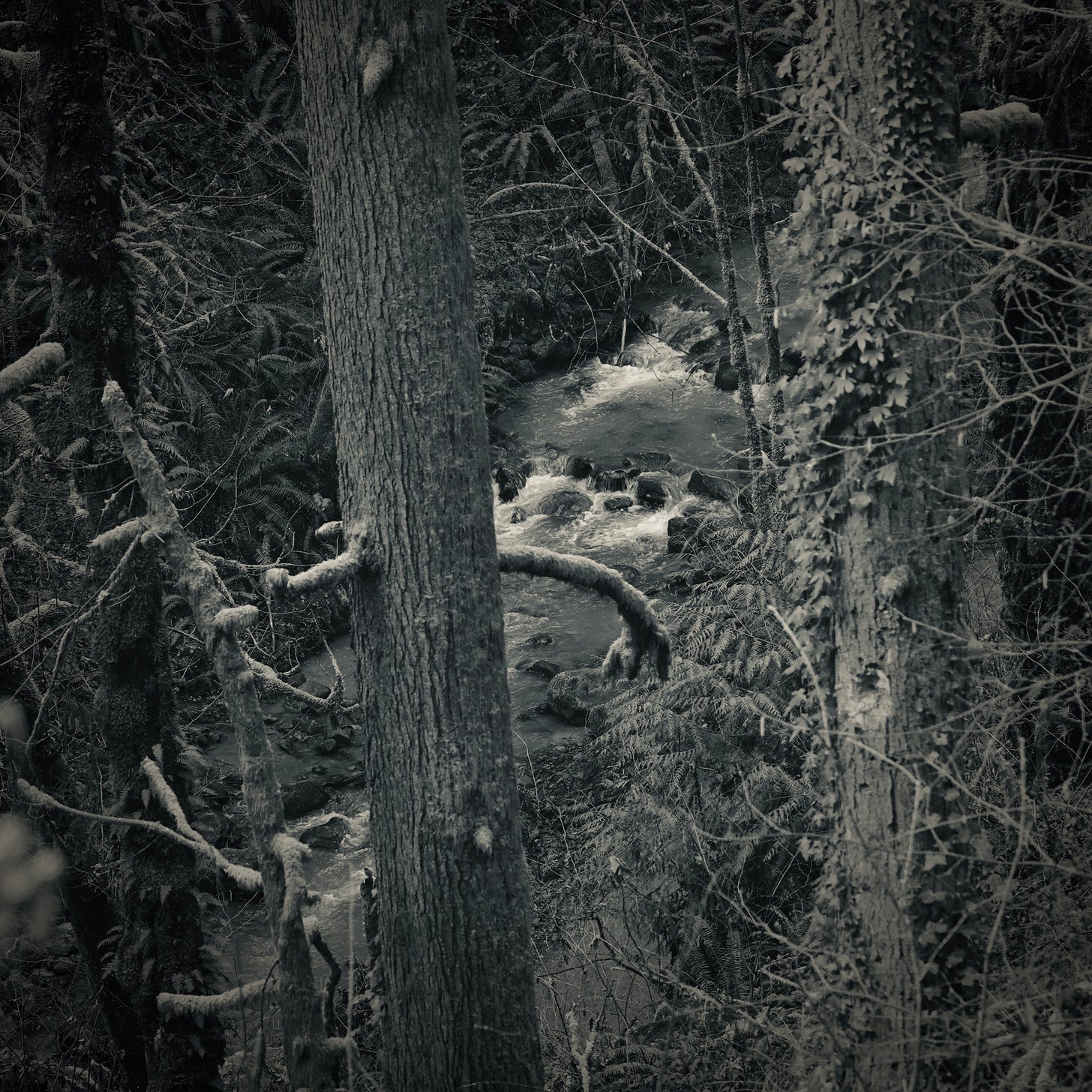
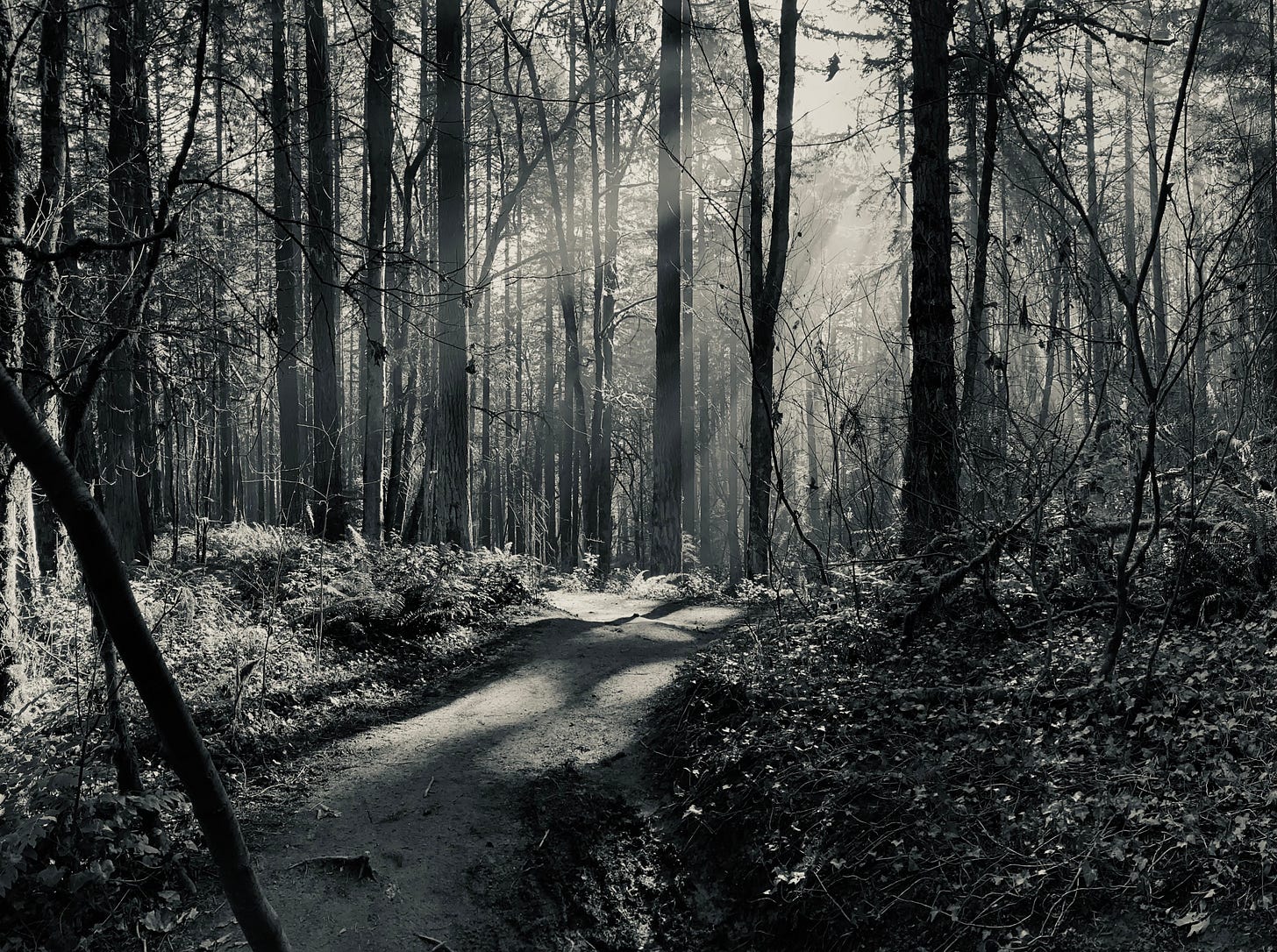
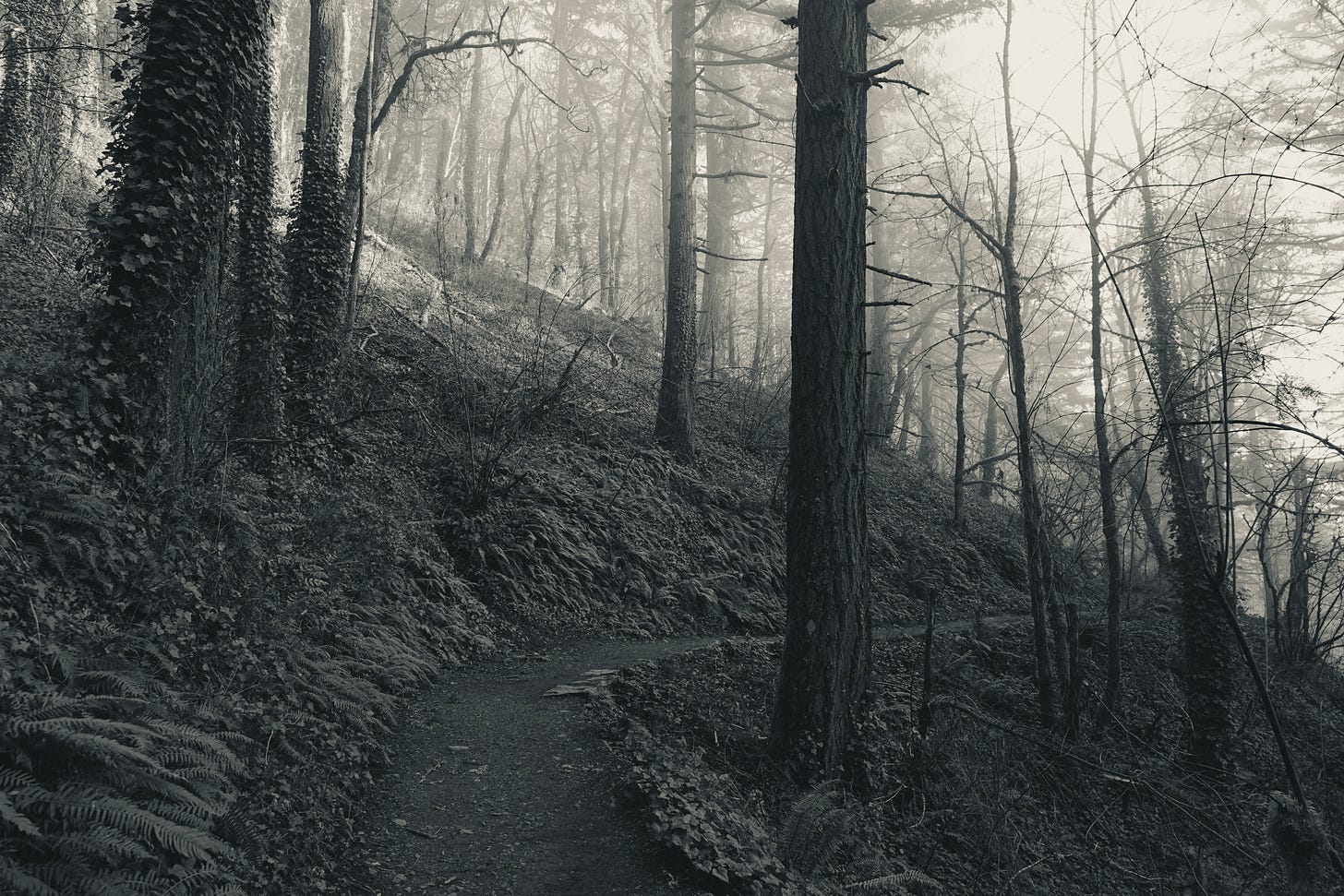
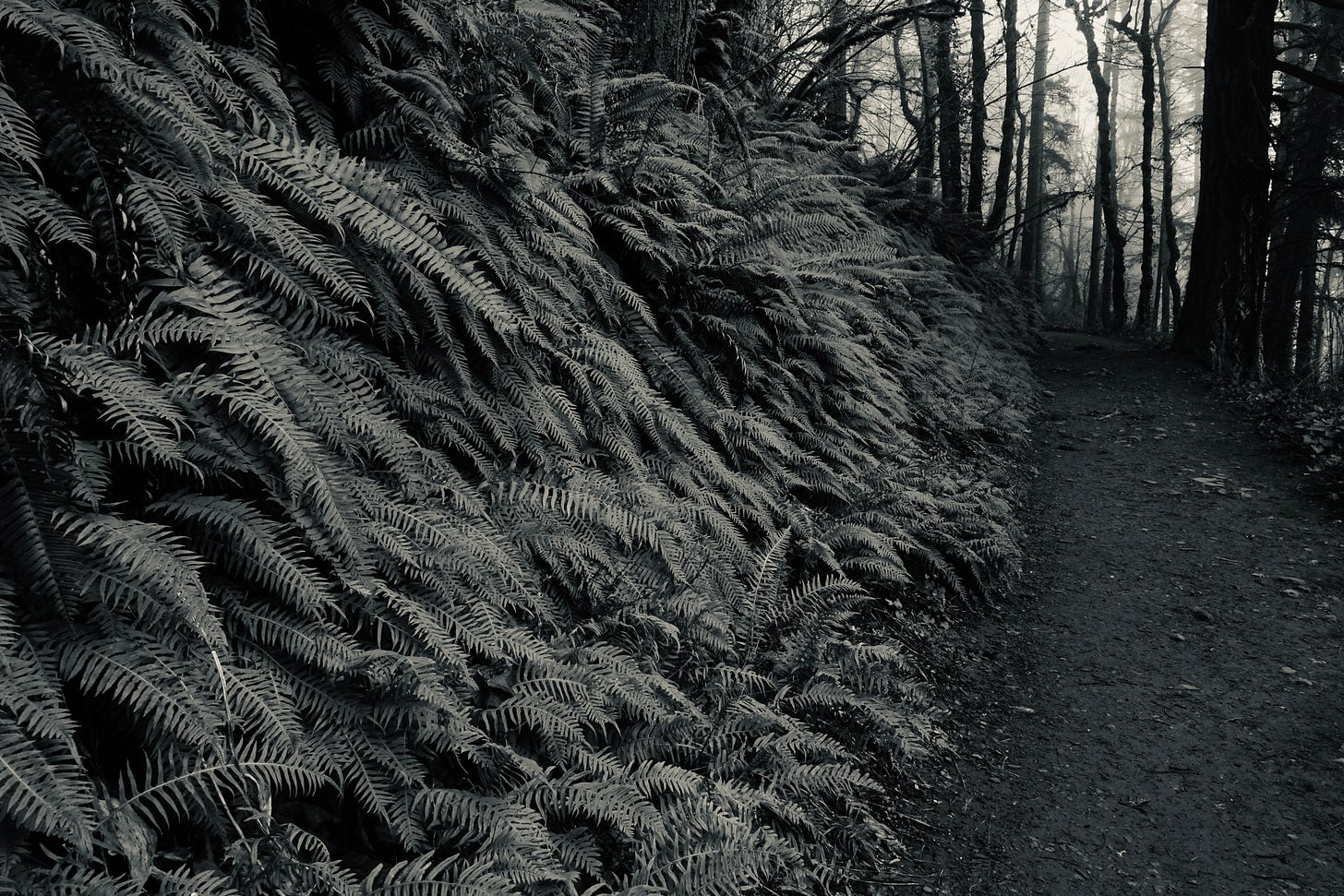
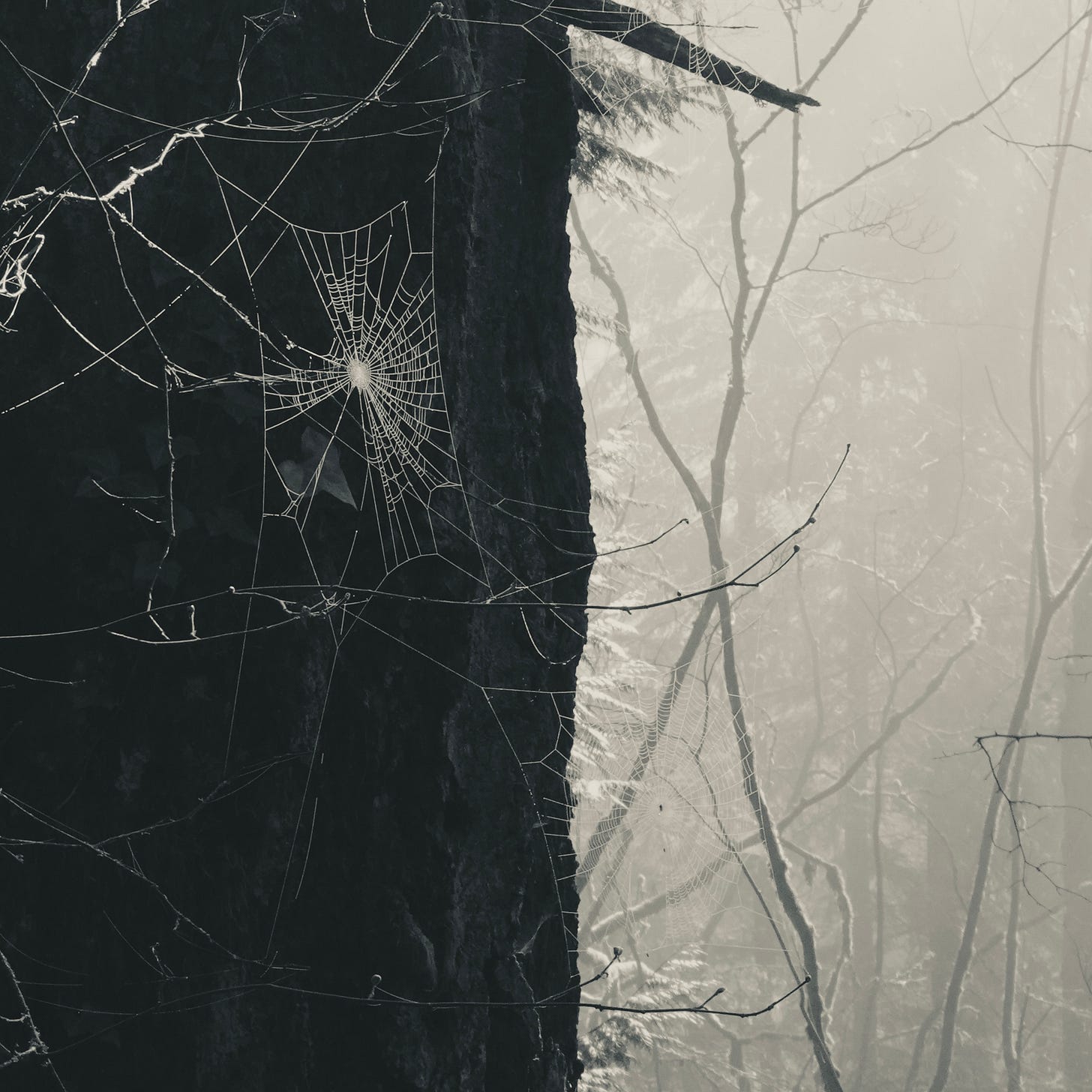
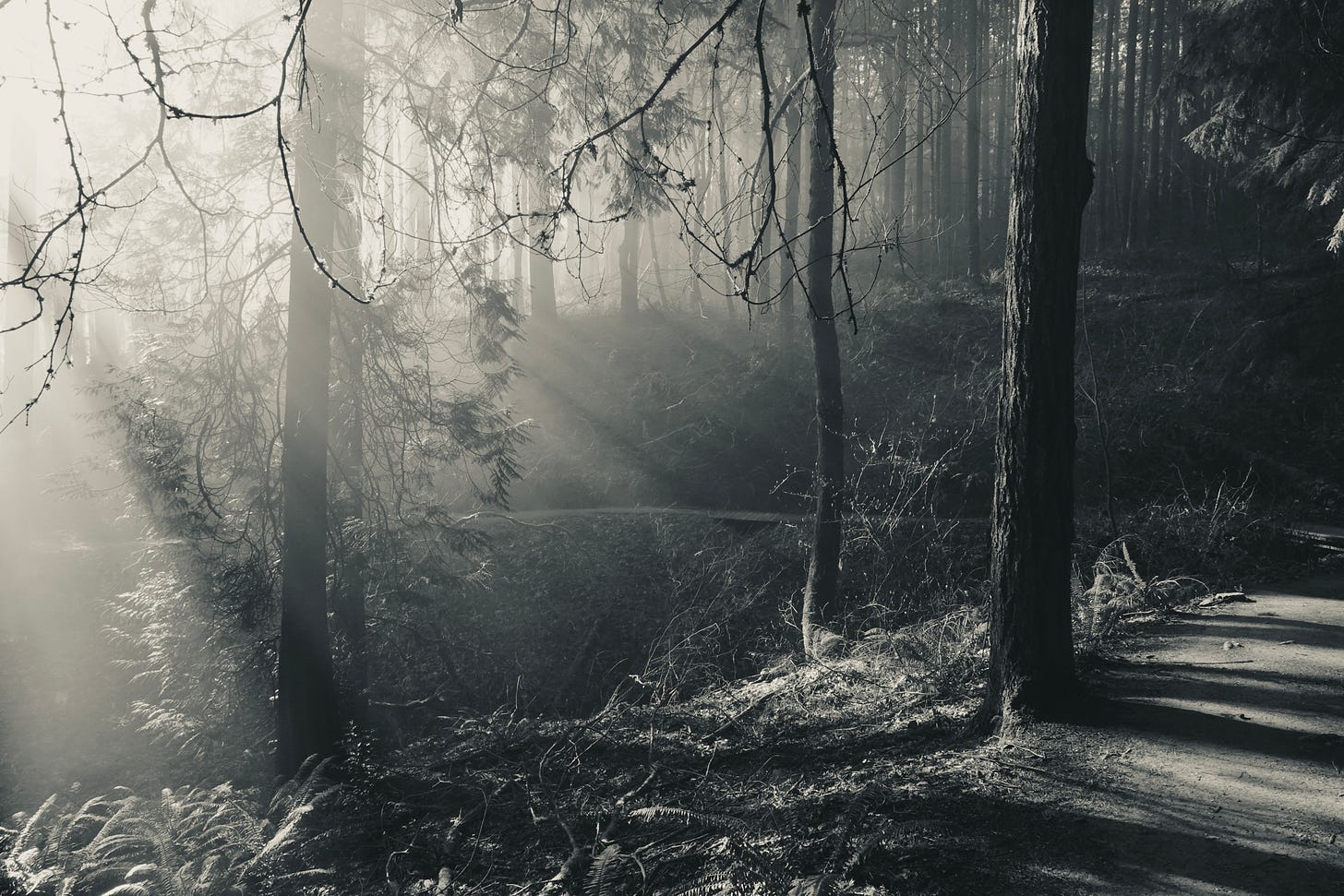
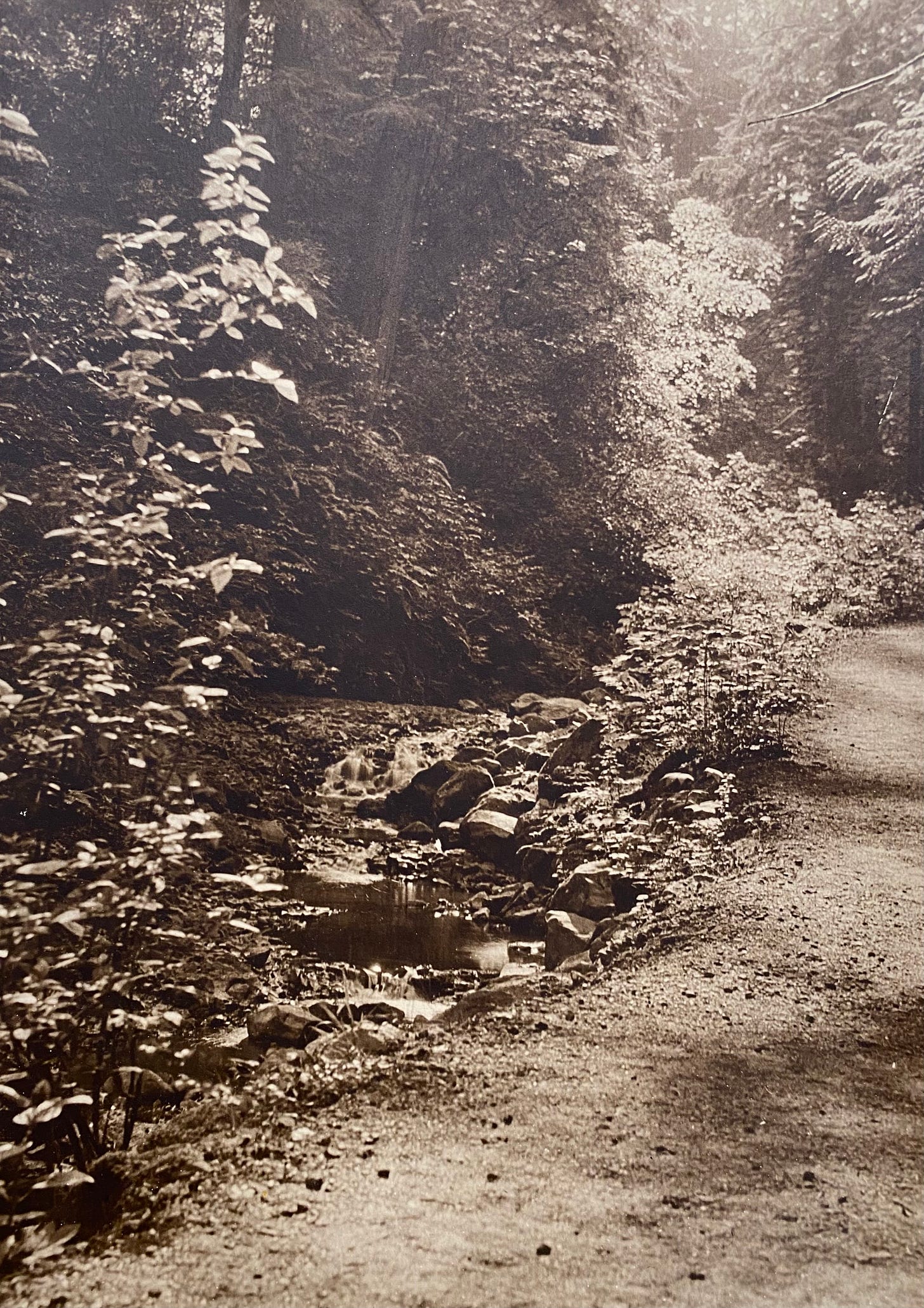
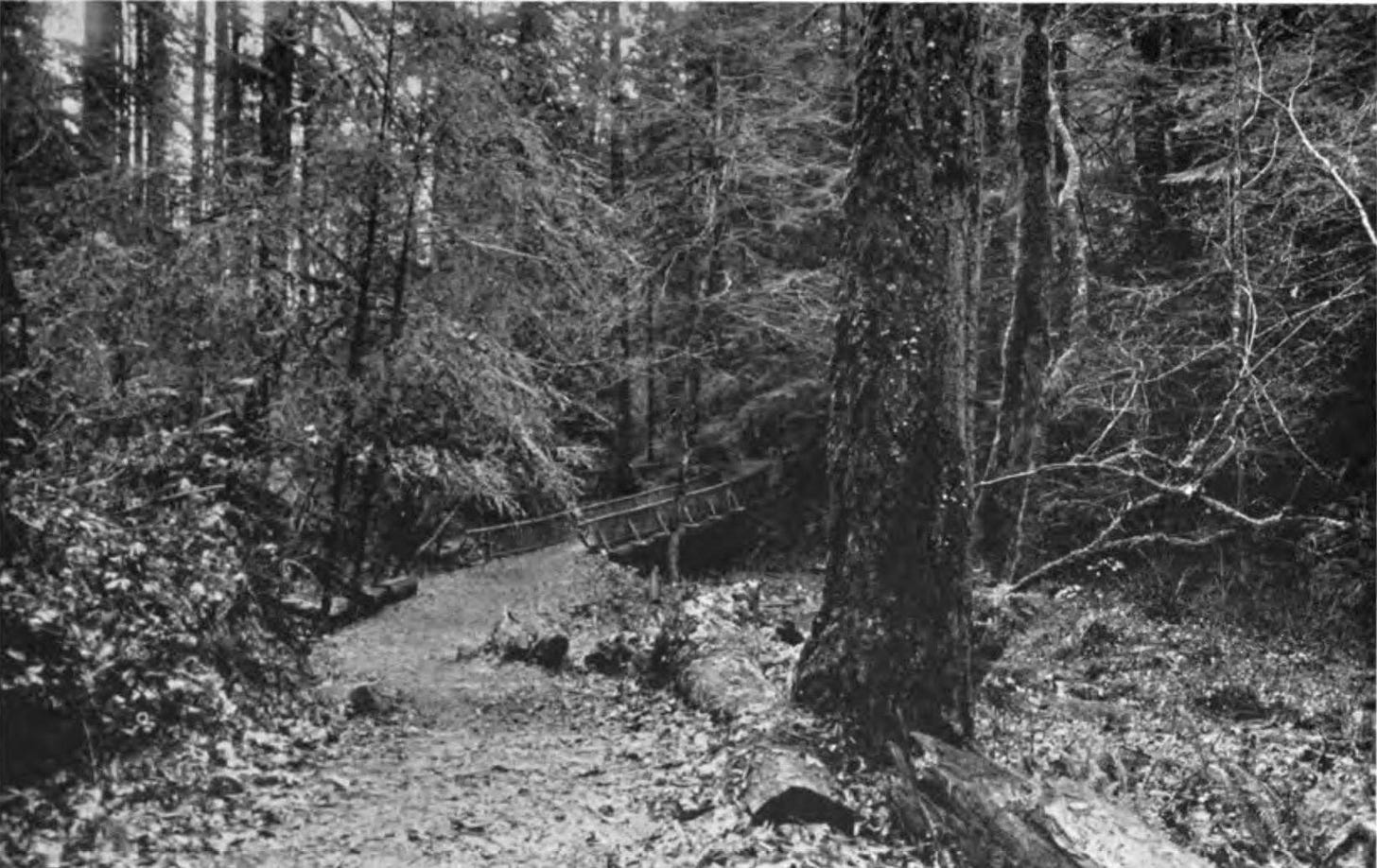
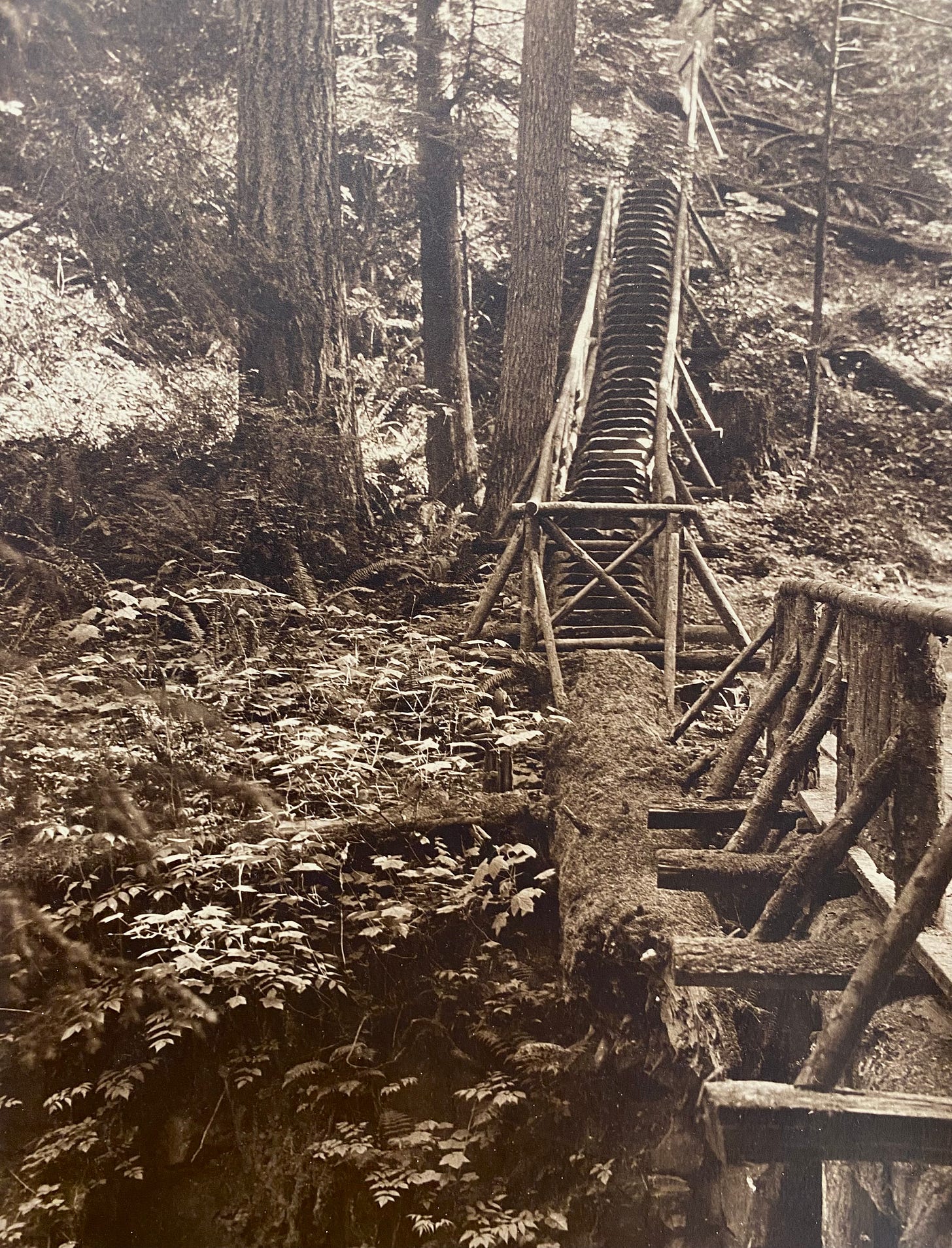

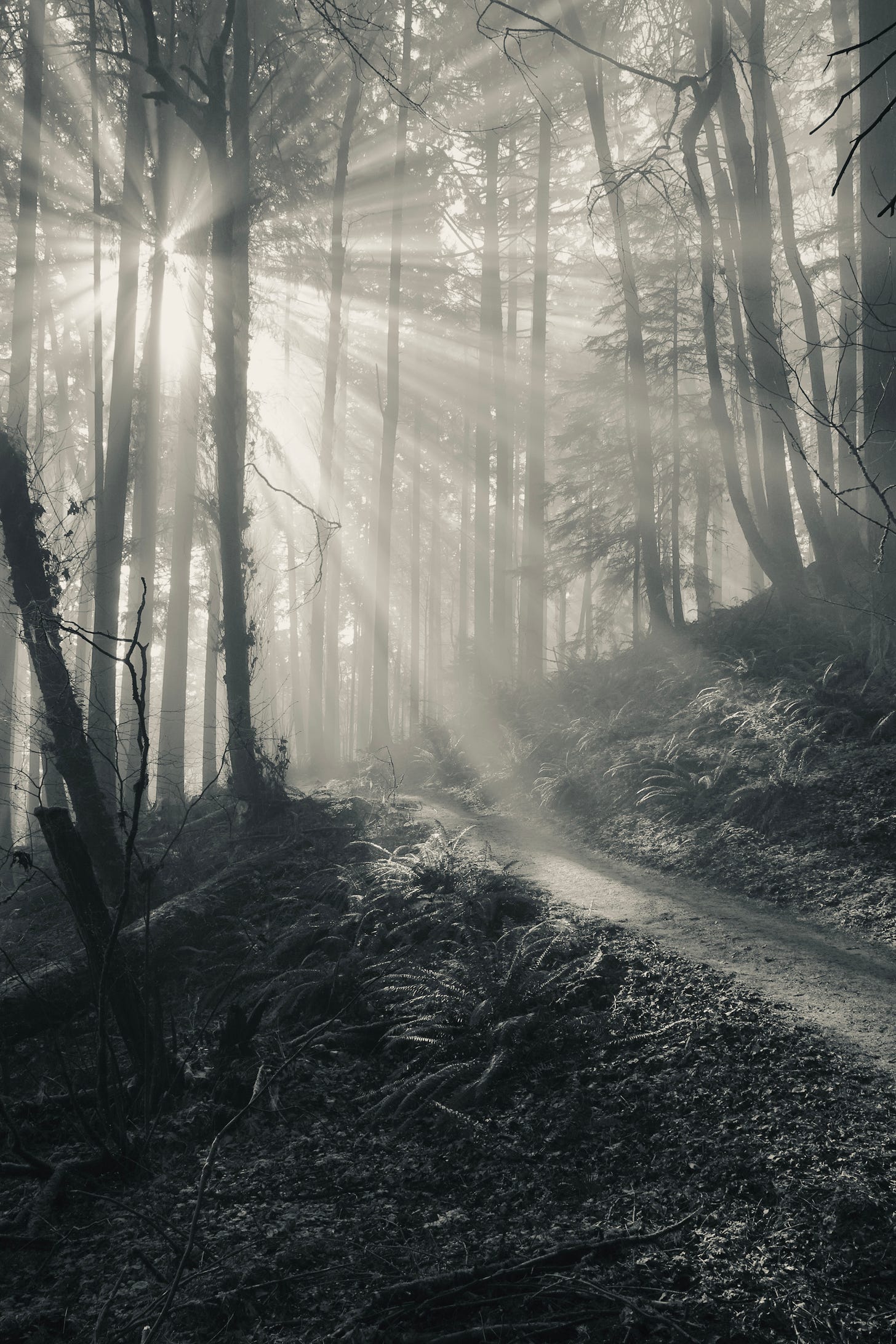

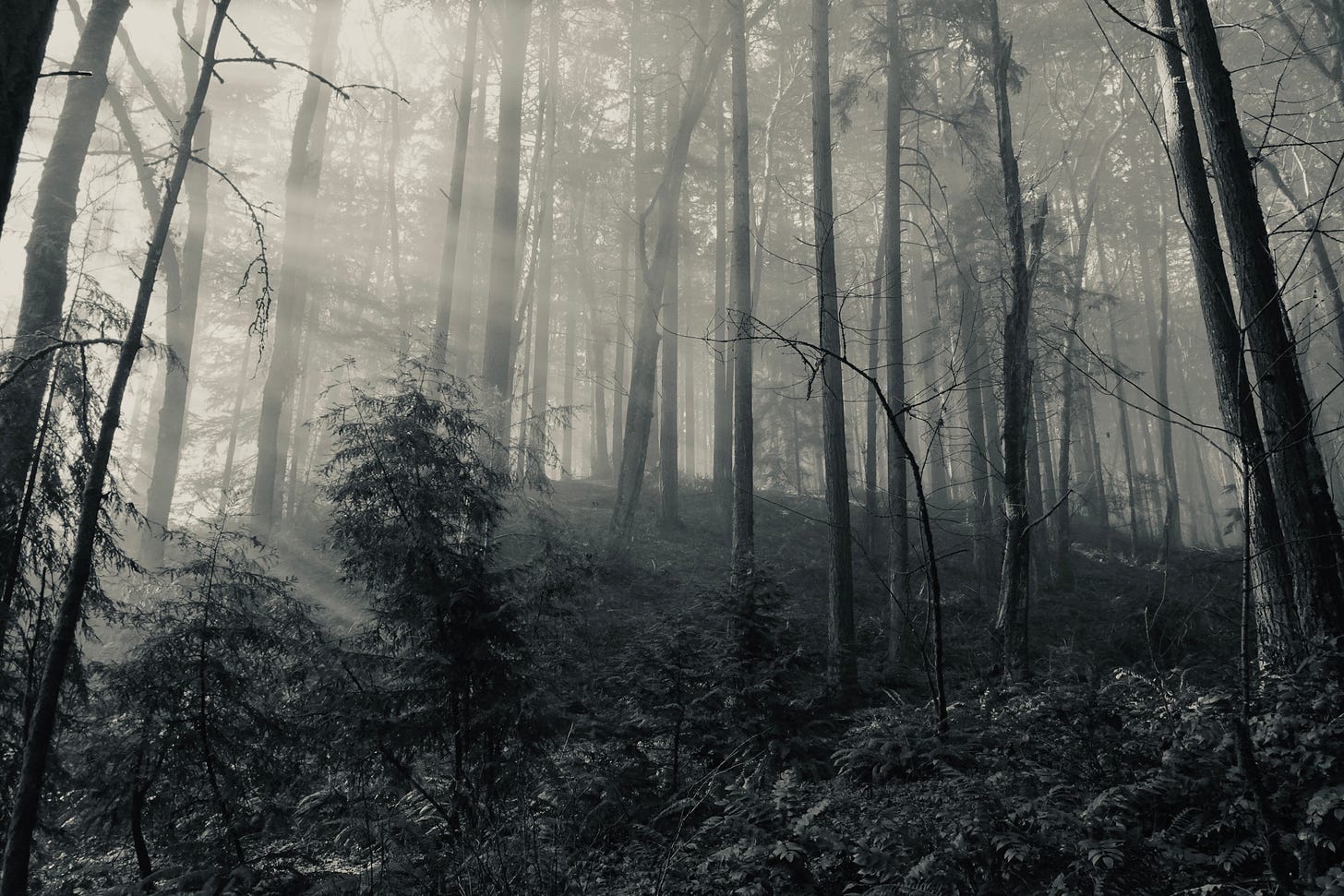
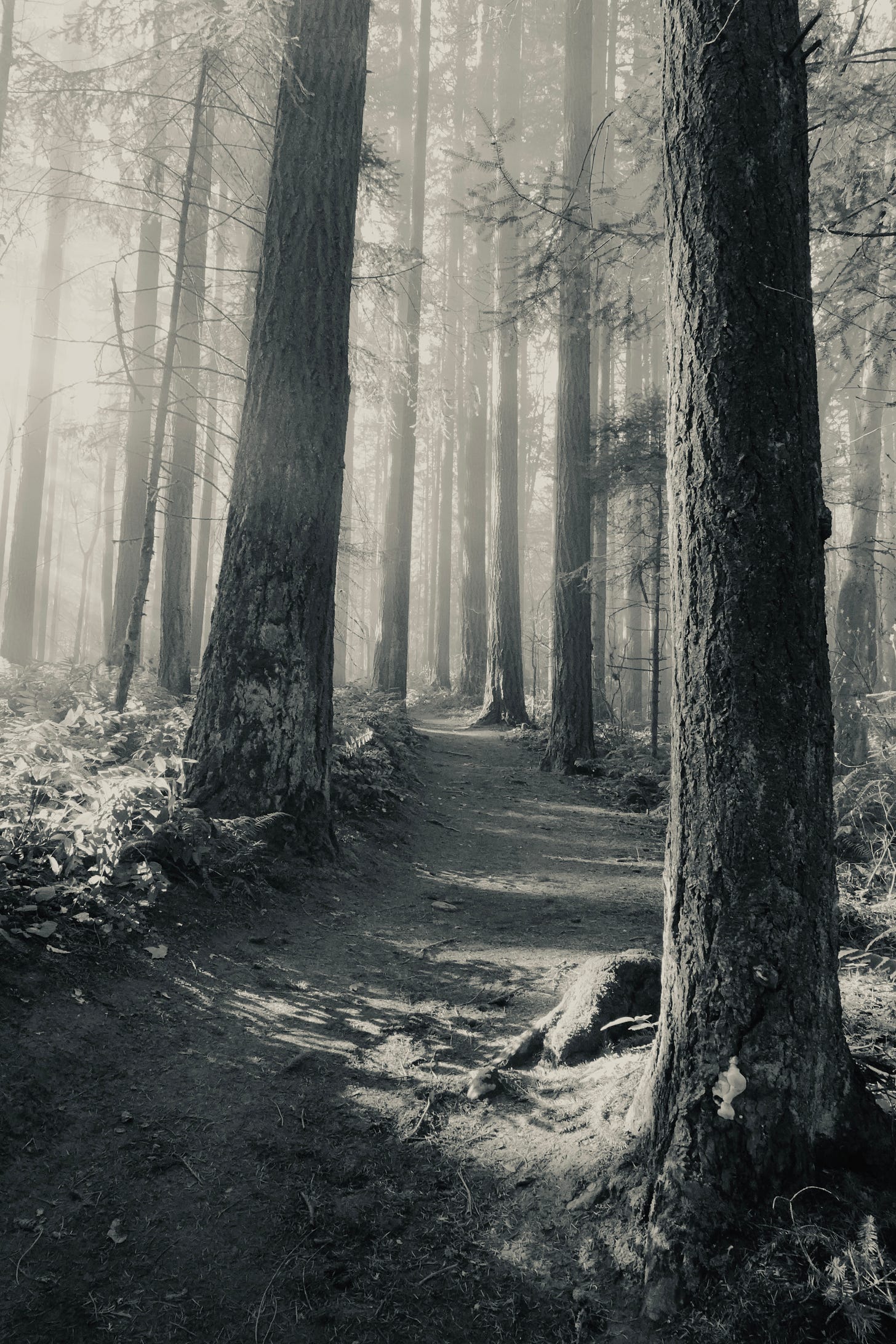
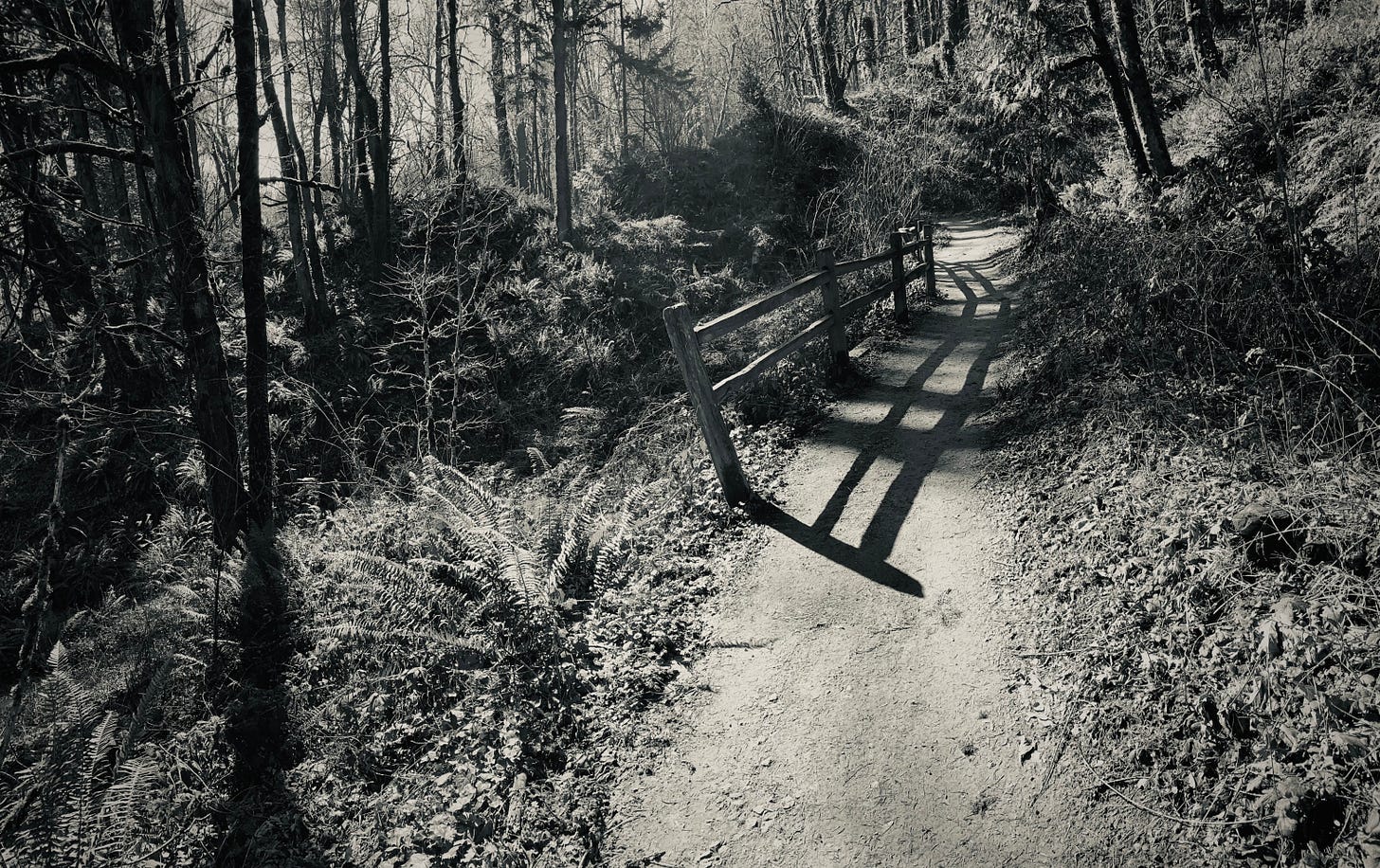

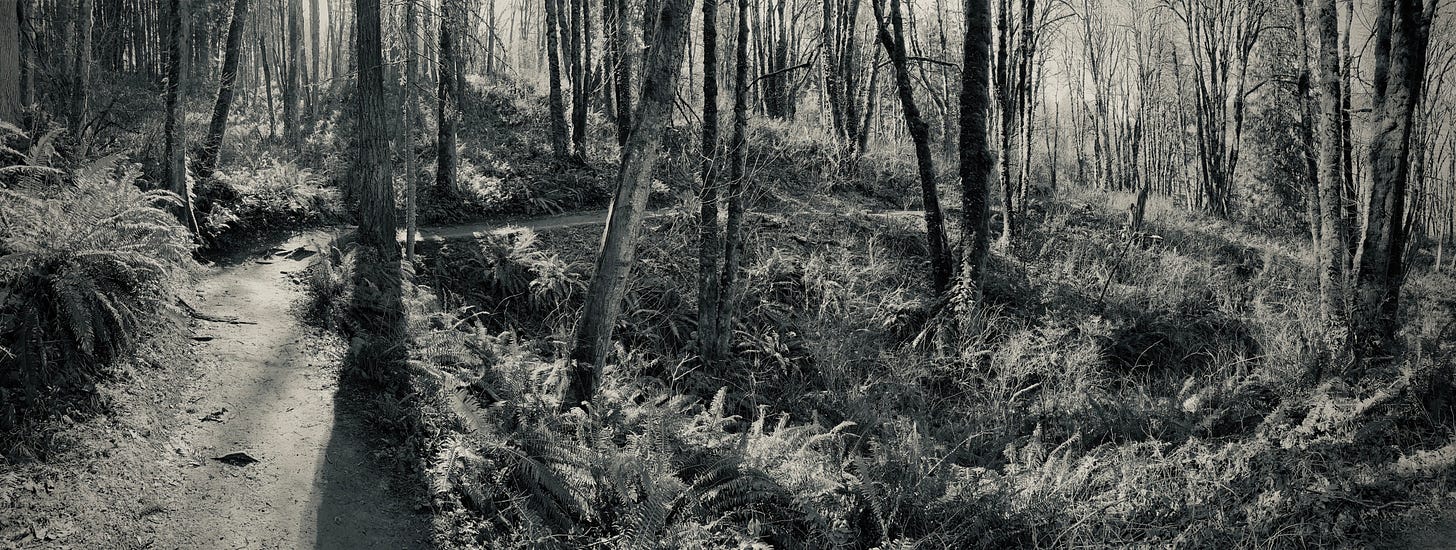

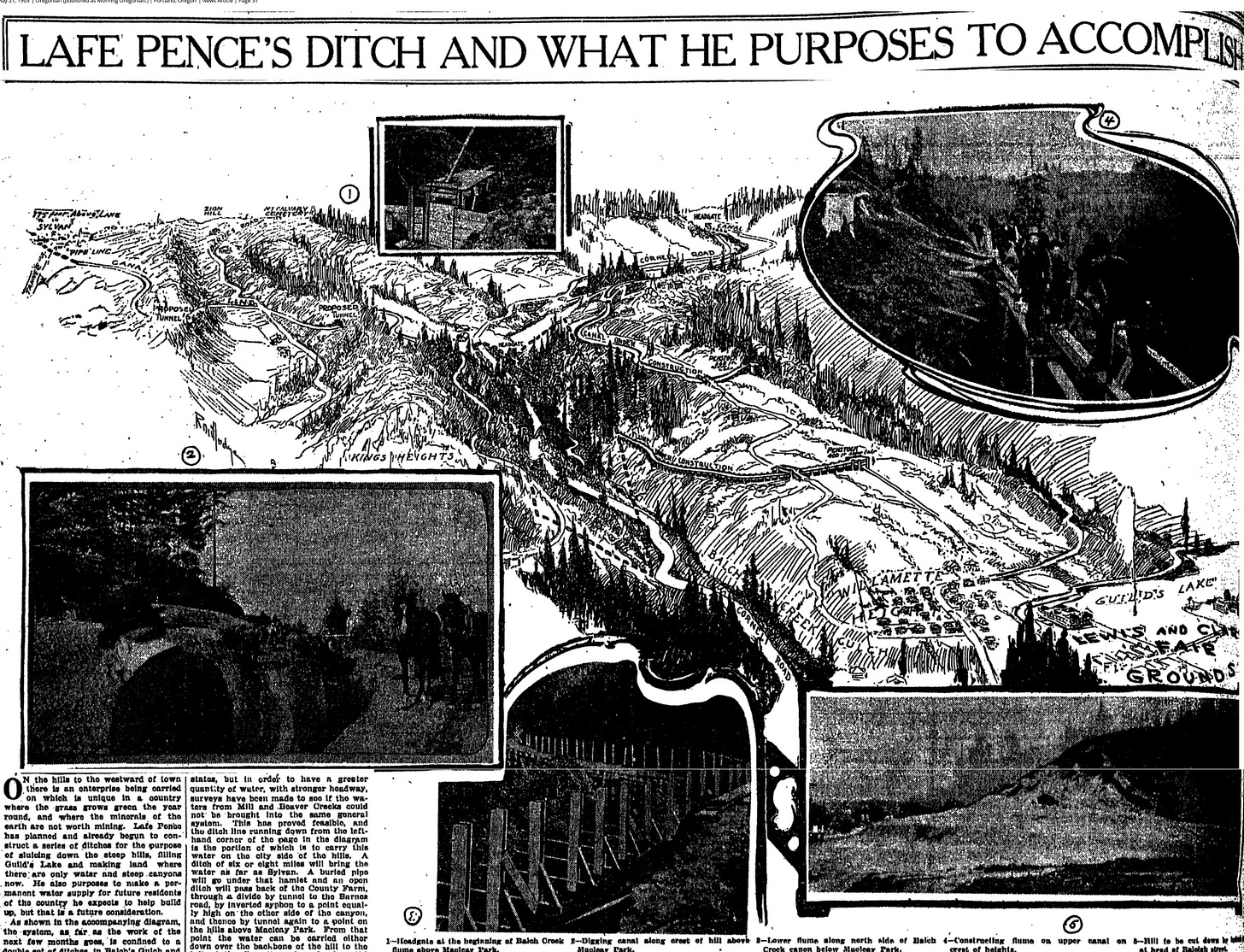
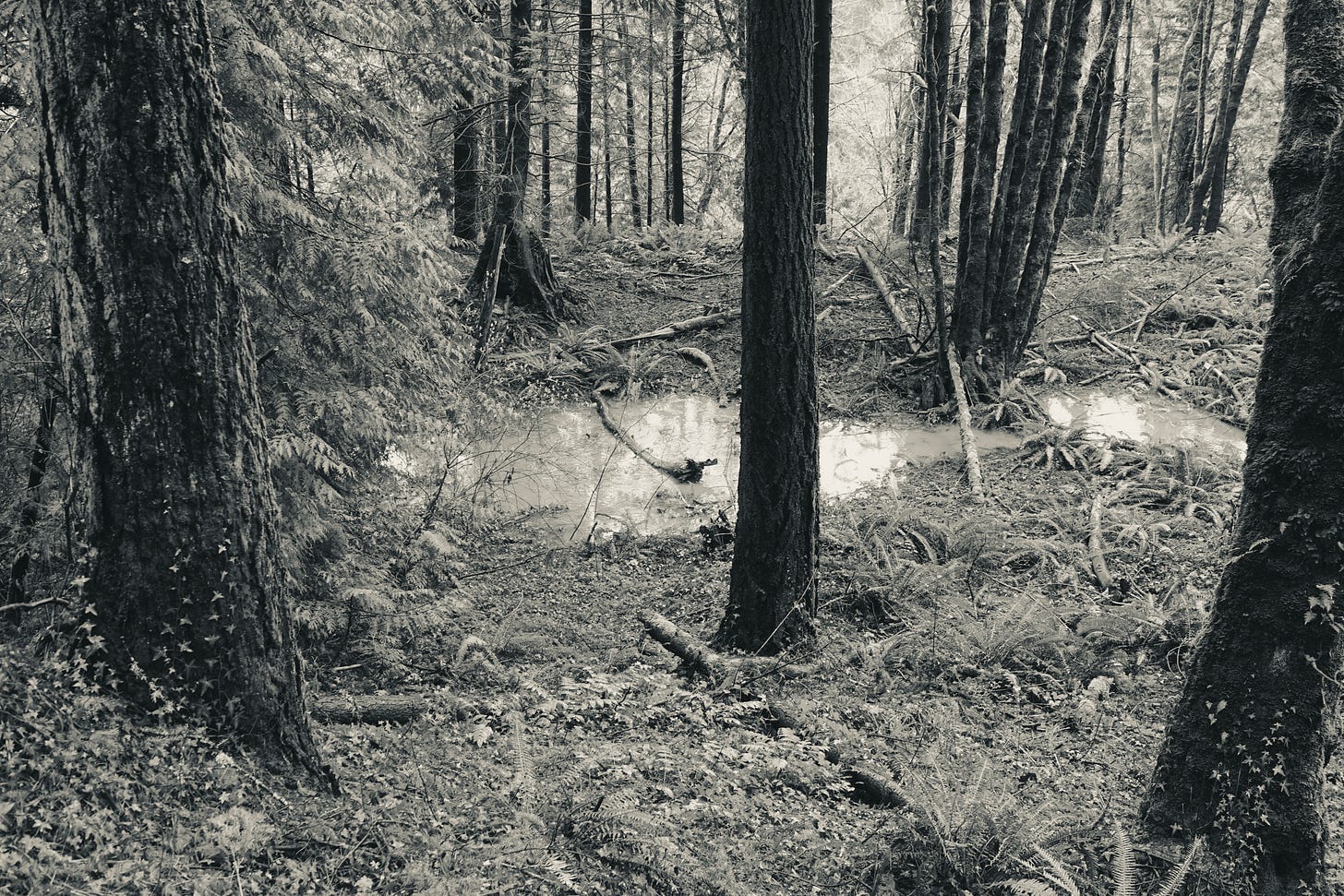
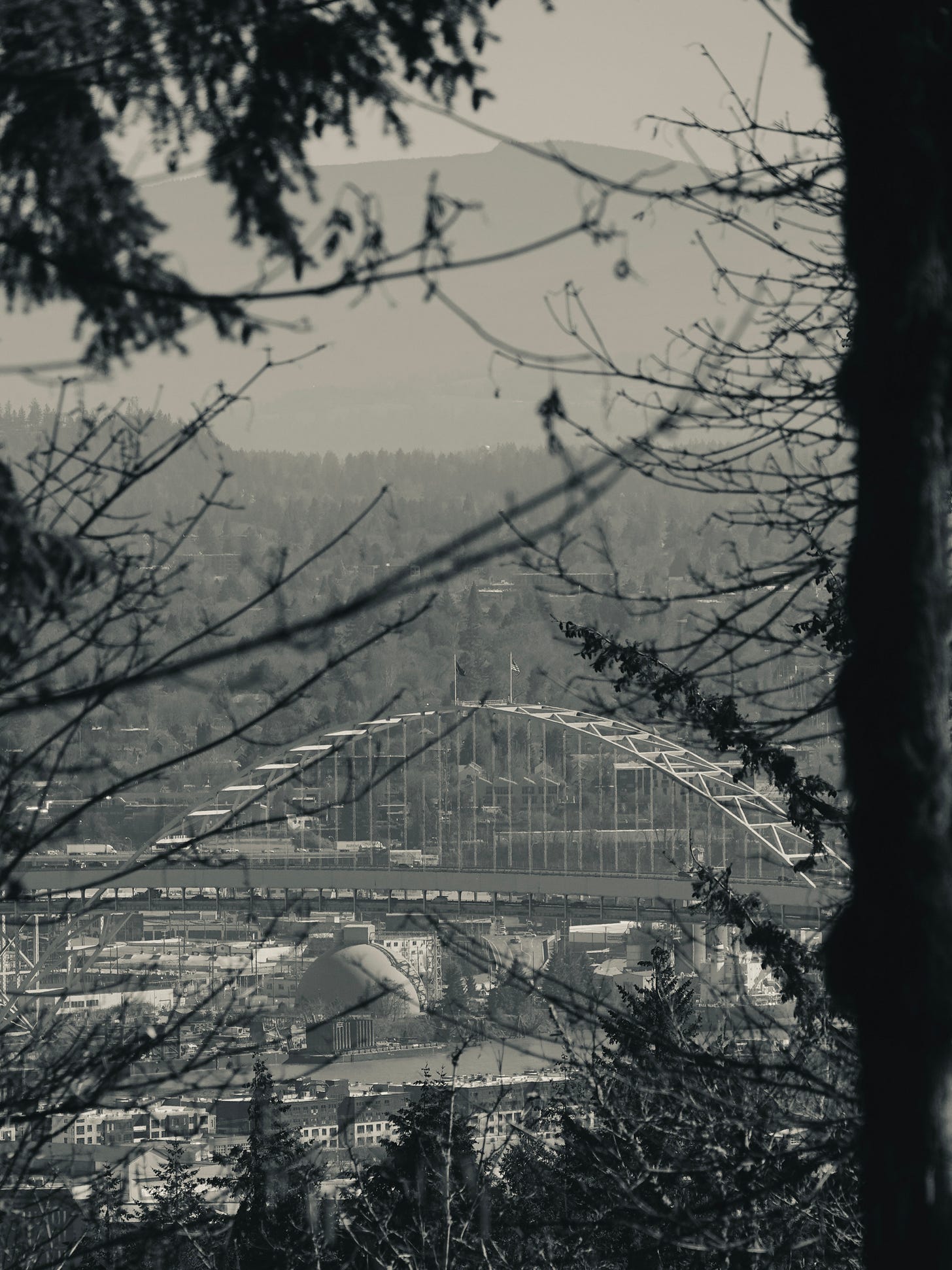
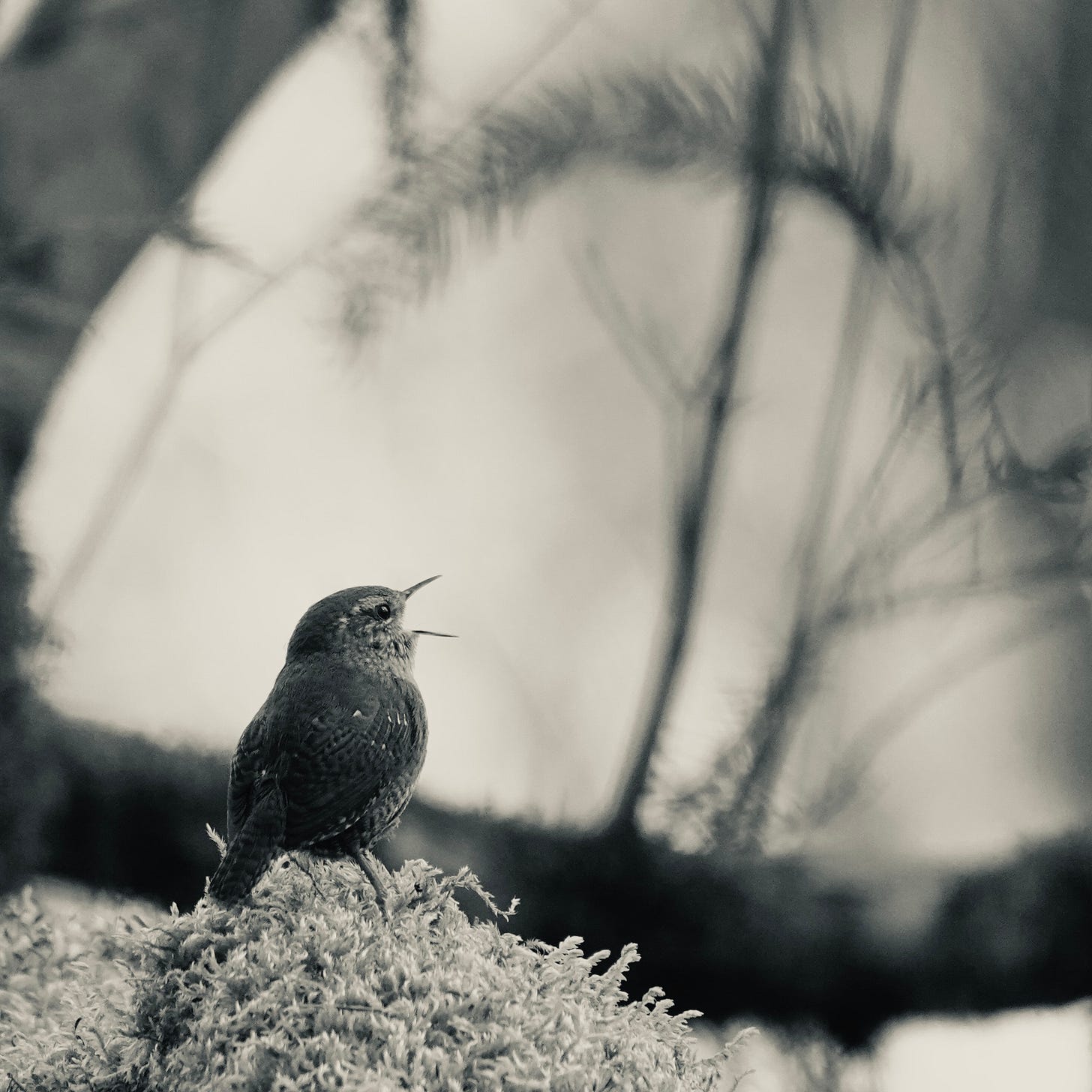




Share this post